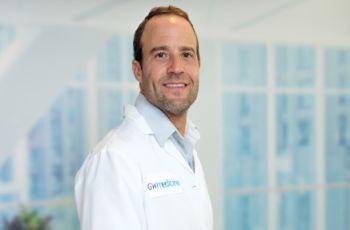WASHINGTON (Oct. 1, 2018) - Approximately 10-20 percent of diagnosed breast cancers are found to be triple-negative, meaning the breast cancer cells test negative for estrogen and progesterone receptors as well as HER2 receptors, genes that can play a role in the development of breast cancer. Triple-negative breast cancer can be more aggressive and difficult to treat as the cancer cells do not respond to hormonal therapies or therapies that target HER2 receptors.
A new study from the George Washington University (GW) Cancer Center found that nanoparticle-encapsulated doxorubicin is promising in the treatment of triple-negative breast cancer. Doxorubicin is a well-known anthracycline drug class used primarily in combination chemotherapy.
The majority of patients with triple-negative breast cancer receive doses of doxorubicin along with taxane and cyclophosphamide as preoperative chemotherapy. About 25-45 percent of those patients respond to this medication and have excellent long-term prognosis.
“Nanomedicine is a very exciting avenue in modern drug development," said Adam Friedman, MD, director of the Supportive Oncodermatology Clinic at GW Cancer Center, professor of dermatology at the GW School of Medicine and Health Sciences, and senior author of the study. “Nanotechnology offers many benefits, including the ability to purposefully customize your drug or diagnostic at the atomic scale, enhancing its ability to interact with its biological target and improve outcomes and potentially safety."
In order to determine the most effective delivery of doxorubicin when encapsulated in a nanoparticle platform, Friedman and his collaborators at the Albert Einstein College of Medicine, synthesized several formulations of doxorubicin containing nanoparticles to identify nanoparticle characteristics which best impact biologic activity against several resistant cancer cell lines.
With the nanoparticle, the team manipulated the size and timed release of the medication and found that increased cell kill in triple-negative breast cancer cells was associated with the smallest size of nanoparticles and the slowest release of doxorubicin.
“This study provides clues for new potential strategies utilizing and manipulating nanotechnology to overcome cancer cell drug resistance," said Friedman. “We have our work cut out for us, but this study shows that we are moving in the right direction."
The study, titled “Nanoparticle-Encapsulated Doxorubicin Demonstrates Superior Tumor Cell Kill in Triple-Negative Breast Cancer Subtypes Intrinsically Resistant to Doxorubicin" is published in Precision Nanomedicine, a scientist-owned, not-for-profit, fully open access journal that promotes all practical, rational, and progressive aspects of nanomedicine. It is supported by the European Foundation for Nanomedicine and by the International Society for Nanomedicine.
To read the full study, visit https://precisionnanomedicine.com/article/22.
Media: To interview Dr. Friedman, please contact Ashley Rizzardo at amrizz713 [at] gwu [dot] edu (amrizz713[at]gwu[dot]edu) or 202-994-8679.
###
About the GW School of Medicine and Health Sciences
Founded in 1824, the GW School of Medicine and Health Sciences (SMHS) was the first medical school in the nation’s capital and is the 11th oldest in the country. Working together in our nation’s capital, with integrity and resolve, the GW SMHS is committed to improving the health and well-being of our local, national, and global communities. smhs.gwu.edu



